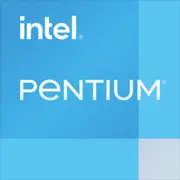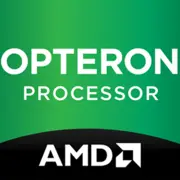利点
- より高い 製造プロセス: 14 nm (14 nm vs 32 nm)
- より高い メモリタイプ: DDR4-2133/2400 | DDR3L-1333/1600 @ 1.35V (DDR4-2133/2400 | DDR3L-1333/1600 @ 1.35V vs DDR3)
- もっと新しい 発売日: January 2017 (January 2017 vs November 2012)
- もっと コア合計数: 16 (2 vs 16)
- より大きな L3キャッシュ: 8MB per die (3 MB vs 8MB per die)
基本
Intel
レーベル名
AMD
January 2017
発売日
November 2012
Desktop
プラットホーム
Server
G4600T
モデル名
?
Intel プロセッサーの番号は、コンピューティングのニーズに適したプロセッサーを選択する際に、プロセッサーのブランド、システム構成、システムレベルのベンチマークとともに考慮すべきいくつかの要素の 1 つにすぎません。
Opteron 6366 HE
Kaby Lake
コード名
Abu Dhabi
-
世代
Opteron (Abu Dhabi)
CPUの仕様
2
コア合計数
?
コアとは、単一のコンピューティング コンポーネント (ダイまたはチップ) 内の独立した中央処理装置の数を表すハードウェア用語です。
16
4
スレッド合計数
?
該当する場合、インテル® ハイパー・スレッディング・テクノロジーはパフォーマンス・コアでのみ利用可能です。
16
3.00 GHz
基本周波数
-
-
基本周波数 (P)
1.8 GHz
-
ターボブースト周波数 (P)
?
インテル® ターボ・ブースト・テクノロジーから得られる最大 P コア・ターボ周波数。
3.1 GHz
Yes
Intel Hyper-Threading Technology
?
Intel® Hyper-Threading Technology (Intel® HT Technology) delivers two processing threads per physical core. Highly threaded applications can get more work done in parallel, completing tasks sooner.
-
No
Intel Turbo Boost Technology
?
Intel® Turbo Boost Technology dynamically increases the processor's frequency as needed by taking advantage of thermal and power headroom to give you a burst of speed when you need it, and increased energy efficiency when you don’t.
-
-
L1キャッシュ
768K
-
L2キャッシュ
16MB
3 MB
L3キャッシュ
8MB per die
-
乗数解除
No
-
乗数
9.0
-
バス周波数
200MHz
FCLGA1151
ソケット
?
ソケットは、プロセッサとマザーボード間の機械的および電気的接続を提供するコンポーネントです。
AMD Socket G34
14 nm
製造プロセス
?
リソグラフィーとは、集積回路の製造に使用される半導体技術を指し、半導体上に構築されるフィーチャーのサイズを示すナノメートル (nm) で報告されます。
32 nm
35 W
消費電力
85 W
92°C
最高動作温度
?
ジャンクション温度は、プロセッサ ダイで許容される最大温度です。
-
-
PCIeバージョン
?
PCIエクスプレスは、高速なシリアルコンピュータ拡張バス標準で、AGP、PCI、PCI-Xなどの古い標準を置き換えるために使用されます。2002年に初めて導入されたPCIe 1.0以降、バンド幅の要求が高まるにつれて、さまざまな改訂と改善が行われています。
2
3.0
PCI Express バージョン
?
PCI Express リビジョンは、PCI Express 標準のサポートされているバージョンです。 Peripheral Component Interconnect Express (PCIe) は、ハードウェア デバイスをコンピュータに接続するための高速シリアル コンピュータ拡張バス規格です。 PCI Express のバージョンが異なれば、サポートされるデータ レートも異なります。
-
16
PCI Expressレーン数
?
PCI Express (PCIe) レーンは、2 つの差動信号ペア (1 つはデータ受信用、もう 1 つはデータ送信用) で構成され、PCIe バスの基本単位です。PCI Express レーンの最大数は、サポートされるレーンの合計数です。
-
Yes
Intel 64
?
Intel® 64 architecture delivers 64-bit computing on server, workstation, desktop and mobile platforms when combined with supporting software.¹ Intel 64 architecture improves performance by allowing systems to address more than 4 GB of both virtual and physical memory.
-
64-bit
指図書
?
命令セットは、CPU 内部に保存されているハード プログラムであり、CPU の動作をガイドおよび最適化します。 これらの命令セットを使用すると、CPU をより効率的に実行できます。 CPU を設計するメーカーは数多くあり、その結果、Intel 陣営の 8086 命令セットや ARM 陣営の RISC 命令セットなど、さまざまな命令セットが作成されます。 x86、ARM v8、および MIPS はすべて命令セットのコードです。 命令セットは拡張できます。 たとえば、x86 は、x86-64 を作成するために 64 ビットのサポートを追加しました。 特定の命令セットと互換性のある CPU を開発するメーカーは、命令セットの特許所有者からの許可を必要とします。 典型的な例は、Intel が AMD を認可し、AMD が x86 命令セットと互換性のある CPU を開発できるようにすることです。
-
Up to 1x16 | 2x8 | 1x8+2x4
PCI Express Configurations
?
PCI Express (PCIe) Configurations describe the available PCIe lane configurations that can be used to link to PCIe devices.
-
-
トランジスタ数
2.4 billions
メモリ仕様
DDR4-2133/2400 | DDR3L-1333/1600 @ 1.35V
メモリタイプ
?
インテル® プロセッサーには、シングル チャネル、デュアル チャネル、トリプル チャネル、フレックス モードの 4 つのタイプがあります。 複数のメモリ チャネルをサポートする製品でチャネルごとに複数の DIMM を装着すると、サポートされる最大メモリ速度が低下する可能性があります。
DDR3
64 GB
最大メモリサイズ
?
最大メモリ サイズとは、プロセッサがサポートする最大メモリ容量を指します。
-
2
最大メモリチャネル数
?
メモリ チャネルの数は、実際のアプリケーションの帯域幅動作を指します。
-
8 GT/s
バス速度
-
Yes
ECC Memory Supported
?
ECC Memory Supported indicates processor support for Error-Correcting Code memory. ECC memory is a type of system memory that can detect and correct common kinds of internal data corruption. Note that ECC memory support requires both processor and chipset support.
-
-
ECCメモリサポート
No
GPUの仕様
Intel® HD Graphics 630
GPU Name
-
-
統合グラフィックス
?
統合型 GPU は、CPU プロセッサに統合されたグラフィックス コアを指します。 プロセッサーの強力な計算能力とインテリジェントな電力効率管理を活用して、優れたグラフィックス パフォーマンスとスムーズなアプリケーション エクスペリエンスを低消費電力で実現します。
N/A
1.05 GHz
グラフィック周波数
?
グラフィックスの最大ダイナミック周波数とは、ダイナミック周波数機能を備えたインテル® HD グラフィックスを使用してサポートできる最大日和見グラフィックス レンダリング クロック周波数 (MHz 単位) を指します。
-
350 MHz
Graphics Base Frequency
?
Graphics Base frequency refers to the rated/guaranteed graphics render clock frequency in MHz.
-
64 GB
Graphics Video Max Memory
-
Yes | at 60Hz
4K Support
-
12
DirectX Support
?
DirectX* Support indicates support for a specific version of Microsoft’s collection of APIs (Application Programming Interfaces) for handling multimedia compute tasks.
-
4096x2304@60Hz
Max Resolution (eDP - Integrated Flat Panel)
?
Max Resolution (Integrated Flat Panel) is the maximum resolution supported by the processor for a device with an integrated flat panel (24bits per pixel & 60Hz). System or device display resolution is dependent on multiple system design factors; actual resolution may be lower on your device.
-
4096x2304@60Hz
Max Resolution (DP)
?
Max Resolution (DP) is the maximum resolution supported by the processor via the DP interface (24bits per pixel & 60Hz). System or device display resolution is dependent on multiple system design factors; actual resolution may be lower on your system.
-
4096x2304@24Hz
Max Resolution (HDMI)
?
Max Resolution (HDMI) is the maximum resolution supported by the processor via the HDMI interface (24bits per pixel & 60Hz). System or device display resolution is dependent on multiple system design factors; actual resolution may be lower on your system.
-
3
Number of Displays Supported
-
その他
Yes
Intel Virtualization Technology (VT-x)
?
Intel® Virtualization Technology (VT-x) allows one hardware platform to function as multiple “virtual” platforms. It offers improved manageability by limiting downtime and maintaining productivity by isolating computing activities into separate partitions.
-
Yes
Intel Virtualization Technology for Directed I/O (VT-d)
?
Intel® Virtualization Technology for Directed I/O (VT-d) continues from the existing support for IA-32 (VT-x) and Itanium® processor (VT-i) virtualization adding new support for I/O-device virtualization. Intel VT-d can help end users improve security and reliability of the systems and also improve performance of I/O devices in virtualized environments.
-
Intel® SSE4.1 | Intel® SSE4.2
Intel Standard Manageability (ISM)
?
Intel® Standard Manageability is the manageability solution for Intel vPro® Essentials platforms and is a subset of Intel® AMT with out-of-band management over Ethernet and Wi-Fi, but no KVM or new life cycle management features.
-
Yes
Enhanced Intel SpeedStep Technology
?
Enhanced Intel SpeedStep® Technology is an advanced means of enabling high performance while meeting the power-conservation needs of mobile systems. Conventional Intel SpeedStep® Technology switches both voltage and frequency in tandem between high and low levels in response to processor load. Enhanced Intel SpeedStep® Technology builds upon that architecture using design strategies such as Separation between Voltage and Frequency Changes, and Clock Partitioning and Recovery.
-
Yes
Execute Disable Bit
?
Execute Disable Bit is a hardware-based security feature that can reduce exposure to viruses and malicious-code attacks and prevent harmful software from executing and propagating on the server or network.
-
3 MB
Cache
?
CPU Cache is an area of fast memory located on the processor. Intel® Smart Cache refers to the architecture that allows all cores to dynamically share access to the last level cache.
-
Yes
Intel AES New Instructions
?
Intel® AES New Instructions (Intel® AES-NI) are a set of instructions that enable fast and secure data encryption and decryption. AES-NI are valuable for a wide range of cryptographic applications, for example: applications that perform bulk encryption/decryption, authentication, random number generation, and authenticated encryption.
-
Yes
Intel Boot Guard
?
Intel® Device Protection Technology with Boot Guard helps protect the system’s pre-OS environment from viruses and malicious software attacks.
-
Yes
Intel Clear Video HD Technology
?
Intel® Clear Video HD Technology, like its predecessor, Intel® Clear Video Technology, is a suite of image decode and processing technologies built into the integrated processor graphics that improve video playback, delivering cleaner, sharper images, more natural, accurate, and vivid colors, and a clear and stable video picture. Intel® Clear Video HD Technology adds video quality enhancements for richer color and more realistic skin tones.
-
Yes
Intel Clear Video Technology
-
Yes
Intel VT-x with Extended Page Tables (EPT)
?
Intel® VT-x with Extended Page Tables (EPT), also known as Second Level Address Translation (SLAT), provides acceleration for memory intensive virtualized applications. Extended Page Tables in Intel® Virtualization Technology platforms reduces the memory and power overhead costs and increases battery life through hardware optimization of page table management.
-
Yes
Intel InTru 3D Technology
-
Yes
Intel OS Guard
-
4.4
OpenGL Support
?
OpenGL (Open Graphics Library) is a cross-language, multi-platform API (Application Programming Interface) for rendering 2D and 3D vector graphics.
-
Yes
Intel Quick Sync Video
?
Intel® Quick Sync Video delivers fast conversion of video for portable media players, online sharing, and video editing and authoring.
-
ベンチマーク
Geekbench 5 シングルコア
Pentium G4600T
729
+64%
Opteron 6366 HE
444
Geekbench 5 マルチコア
Pentium G4600T
1460
Opteron 6366 HE
3469
+138%
Passmark CPU シングルコア
Pentium G4600T
1772
+77%
Opteron 6366 HE
1003
Passmark CPU マルチコア
Pentium G4600T
3055
Opteron 6366 HE
5613
+84%
ソーシャルメディアで共有する
または当サイトへのリンクを追加
<a href="https://cputronic.com/ja/cpu/compare/intel-pentium-g4600t-vs-amd-opteron-6366-he" target="_blank">Intel Pentium G4600T vs AMD Opteron 6366 HE</a>

